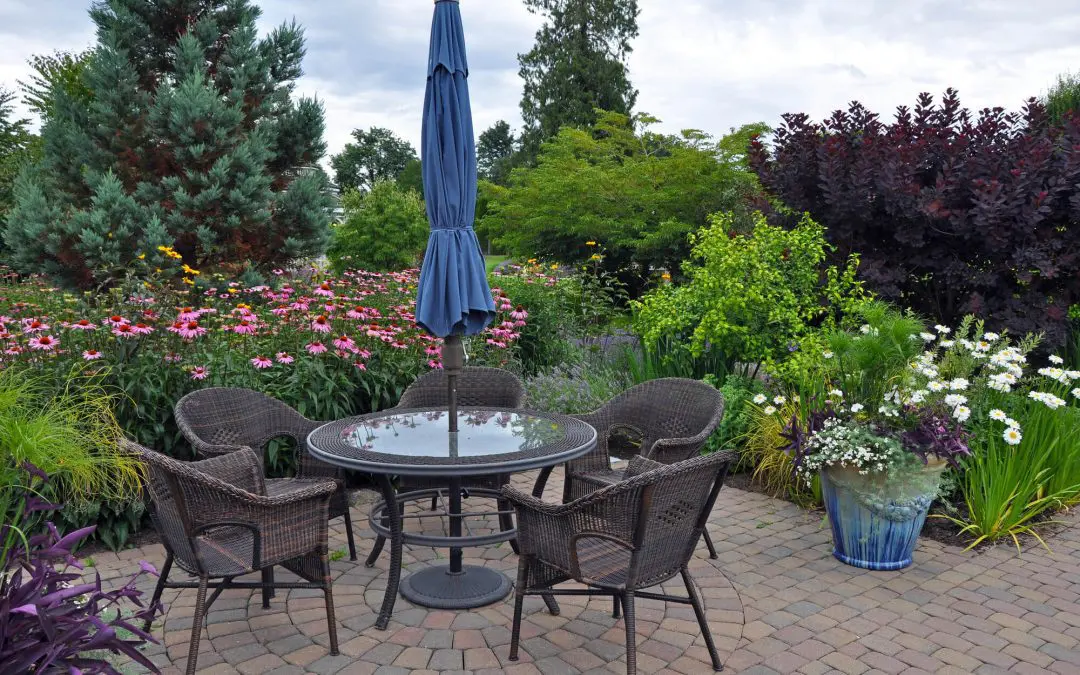In the realm of landscape design, hardscaping stands out as a crucial element that not only adds aesthetic appeal but also delivers a myriad of practical benefits. From enhancing property value to providing functional outdoor living spaces, hardscaping offers numerous advantages that go beyond mere visual appeal. Whether it’s a stylish stone pathway, a sturdy retaining wall, or a cozy patio, integrating hardscape features into your landscape can transform ordinary outdoor areas into captivating and functional retreats. Let’s delve into the benefits of hardscaping.
1. Benefits of Hardscaping: Increased Property Value
One of the most notable advantages of hardscaping is its ability to boost property value. Well-designed hardscape elements add curb appeal, making a property more attractive to potential buyers. Features such as paver driveways, stone walkways, and decorative retaining walls can significantly enhance the overall aesthetic appeal of a home, thereby increasing its market value.
2. Low Maintenance
Unlike traditional landscaping elements like grass and flower beds that require regular upkeep, hardscape features are generally low maintenance. Materials such as brick, stone, concrete, and composite decking are durable and require minimal care to retain their beauty. This makes hardscaping an ideal choice for homeowners seeking to reduce the time and effort spent on yard maintenance while still enjoying a beautiful outdoor space.
3. Extended Living Space
Hardscaping creates opportunities to extend your living space outdoors, providing areas for relaxation, entertainment, and recreation. Patios, decks, and outdoor kitchens offer functional spaces for hosting gatherings, dining al fresco, or simply enjoying the fresh air. By seamlessly blending indoor and outdoor living spaces, hardscaping allows homeowners to make the most of their property while enjoying the beauty of nature.
4. Improved Drainage and Erosion Control
Hardscape features such as retaining walls, permeable pavers, and French drains can help mitigate drainage issues and prevent erosion. Retaining walls, in particular, can be strategically designed to redirect water flow, preventing soil erosion and minimizing the risk of foundation damage. Permeable pavers allow rainwater to infiltrate the soil, reducing runoff and replenishing groundwater supplies. By incorporating these elements into your landscape design, you can effectively manage water drainage while preserving the integrity of your property.
5. Benefits of Hardscaping: Versatility in Design
Hardscaping offers endless possibilities for creative expression and customization. With a wide range of materials, colors, textures, and patterns to choose from, homeowners can tailor their hardscape design to suit their personal preferences and complement the architectural style of their home. Whether you prefer the rustic charm of natural stone or the sleek modern look of concrete, hardscaping allows you to create a unique outdoor space that reflects your individual taste and lifestyle.
From enhancing property value to providing functional outdoor living spaces, hardscaping offers a multitude of benefits for homeowners. By incorporating elements such as patios, walkways, retaining walls, and outdoor kitchens into their landscape design, homeowners can create inviting outdoor environments that enhance their properties’ beauty, functionality, and value. Whether you’re looking to create a tranquil retreat for relaxation or an entertainment hub for hosting gatherings, hardscaping provides the versatility and durability needed to bring your outdoor vision to life.
Hardscaping FAQs
Can hardscaping be environmentally friendly?
Yes, hardscaping can incorporate eco-friendly practices such as using permeable pavers to reduce water runoff, incorporating native stone or reclaimed materials, and designing features that enhance biodiversity and support local ecosystems.
How do I maintain hardscaping features?
Regular maintenance tasks for hardscaping features may include cleaning surfaces, sealing porous materials to prevent staining, repairing cracks or damage, and ensuring proper drainage to prevent water damage.
Do I need a professional for hardscaping projects?
While some hardscaping projects can be DIY-friendly, complex designs or projects requiring specialized skills (such as retaining wall construction or intricate paving patterns) are best left to professionals with experience in hardscape installation.
How long does a hardscaping project typically take?
The duration of a hardscaping project depends on various factors, including the size and complexity of the design, the materials used, and weather conditions. Small projects may take a few days, while larger ones could take several weeks or even months to complete.
JBS Home Inspections offers comprehensive home inspections for customers in the greater Boston area. Contact us to request our services.

